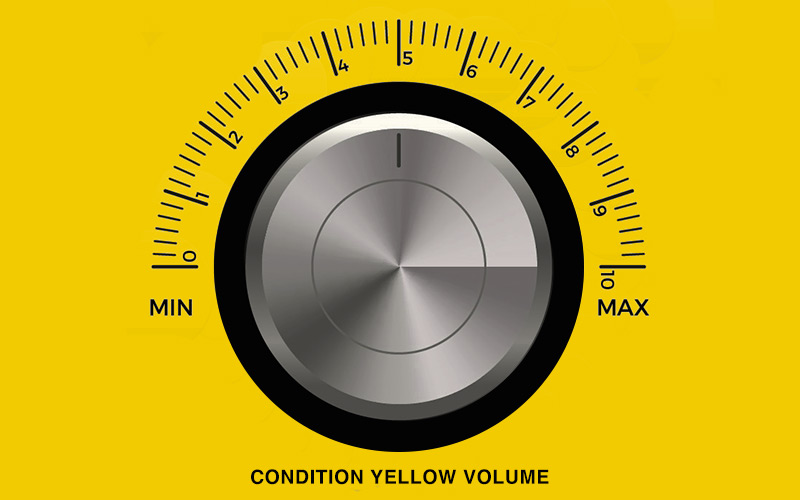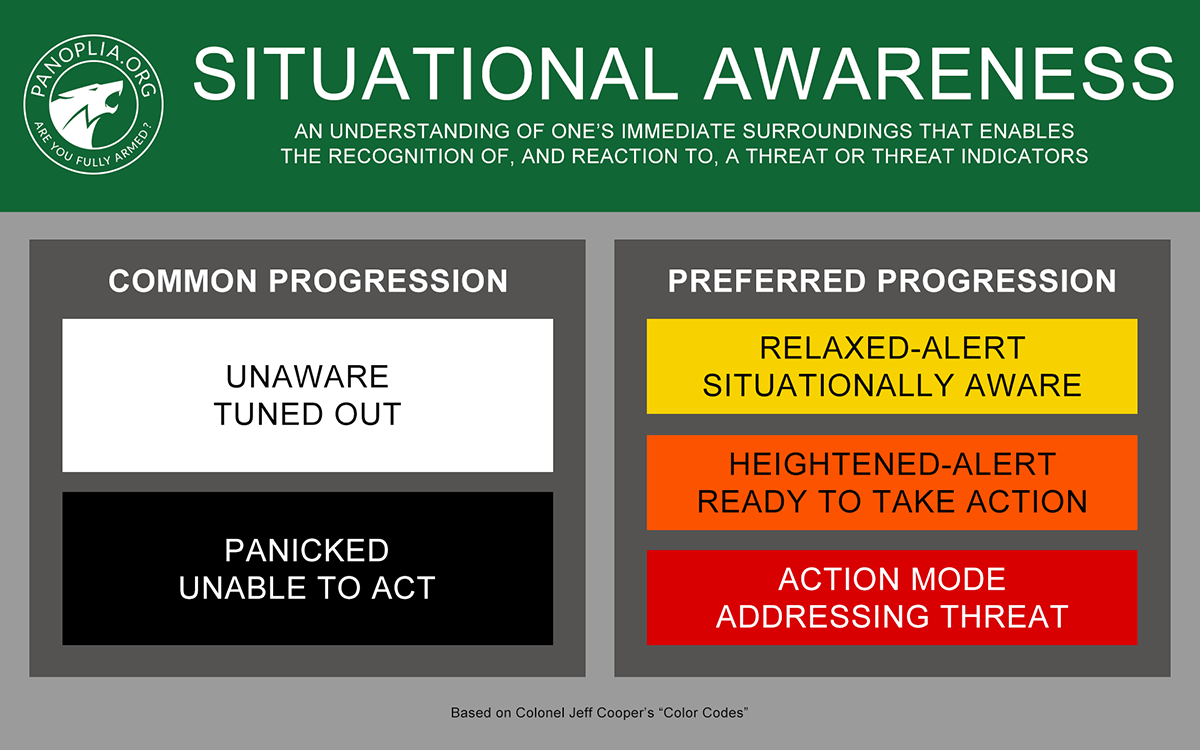The importance of maintaining an appropriate level of Situational Awareness (SA) has been understood for as long as humans have walked the earth. The basic concept is simple. Those who are aware of threats in their environment have a far better chance of surviving than those who do not.
A great example of this in the ancient world can be found in the Bible. Judges chapter seven describes the situation. Some three thousand years ago Israel found itself facing a vast army that had encamped against them. Commanded by Gideon, Israel had 32,000 men in their own camp. God, however, wanted to use this situation to make a point. God instructed Gideon to send home any of the warriors who were fearful. When this offer was made, 22,000 went home. That left 10,000 warriors. God felt that this was still too many.
God then instructed Gideon to have the 10,000 go to a water source to drink. 9,700 of them knelt down, placed their face to the water, and drank. 300 however, used their hands to bring the water up to their face. God had Gideon send the 9,700 home. He chose the 300 to defeat the vast army that was drawn up against them. There are various thoughts concerning why the 300 were chosen. One view is that bringing the water up to their faces allowed them to maintain situational awareness, and thus demonstrated their wisdom.
Today, situational awareness is central to almost all security training. Still, it’s often misunderstood. In relation to SA, you may have heard instructors encourage individuals to “keep your head on a swivel.” The problem with this approach is that an enemy with good SA will immediately identify anyone with “their head on a swivel” as an adversary. The art of situational awareness is maintaining a very high level of SA without making it obvious that you are doing so. We cover this in topic 02.01.03 of the Panoplia.org online Soft Skills and Tactics course.
Another issue with situational awareness concerns the timing of the levels involved. The diagram above outlines the various levels and the associated colors. Many who are untrained walk through life tuned out. We call this “Condition White.” When attacked, they often panic and cannot act to defend themselves.
A much better “progression” is for one to be in Yellow (relaxed-alert) when in public. Being alert in this way allows one to see a potential threat as it develops. In this case, they would enter Condition Orange (heightened-alert). If the potential threat turns out to be nothing, they go back to Yellow. If it proves to be a genuine threat, they go to Red (action mode) and they address the threat based on their level of training, their ability, and the context.
The downside of SA occurs when an individual, for a variety of reasons, ends up living in Condition Orange. In other words, he or she walks through life in a heightened state of alertness, and ready to take action at any moment. This may sound good, yet it can actually cause great harm. I can speak of this from first-hand experience. There was a lengthy period during which I operated in Orange far more then was healthy. This was due to the overseas context in which I was living, and the threats, real and imagined, that were present.
Living in Orange is not good for one’s own mental health. It can also ruin a marriage, and have a significantly negative impact on the healthy development of ones children. Again, I’ve witnessed this first hand as I’ve visited individuals who serve in high-risk locations. Whether within their area of operation, or back home for a period of time, it’s not difficult to recognize the signs of someone who lives on adrenaline and for whom Condition Orange is the norm.
Aside from mental health, relational, and family issues, those who live in Orange are actually less situationally aware than those who know how to progress through the various levels in an appropriate way. This is due to the fact that it’s simply not humanly possible to remain aware of one’s environment at Condition Orange for long periods of time. It’s like using a tactical flashlight on its highest lumen setting all day. It will burn out after an hour or two. The same light might last for weeks without needing a recharge if it’s used only when necessary, and then only at the lumen setting that’s appropriate.
We recommend that one set up his or her home so that one can live in Condition White while inside. Some trainers would disagree, but the simple fact is that everyone is tuned-out while sleeping. There are numerous ways to set up one’s home so that one can know in advance if a threat may be approaching. This can be accomplished through the wise use of perimeter alarms like those we reviewed here. Having a dog is also a great idea in this regard. Being prepared in this way can allow one to be in Condition White while at home.
Once you leave your home, we recommend that you enter Condition Yellow. This is known as “Relaxed-Alert.” Think of Yellow as adjustable. Like the volume knob on an old-school stereo, Yellow can be turned up or down depending on the context in which you find yourself.

For example, if you’re in a busy parking garage at Noon and there are plenty of people around, your “Relaxed-Alert” level might be set at volume 4. In the same garage at 9:00PM with less people, however, your Yellow volume may be at 8. You’re still relaxed and alert, yet your awareness is higher than it would be at Noon.
If while in Yellow you notice something that’s “off” you can transition to Orange, and then move back to Yellow or into Red as appropriate. Operating at a reasonable “volume” of Yellow when in public is a great way to remain situationally aware without burning yourself out.
Cultivating the art of situational awareness takes time and experience. Avoiding the extremes of being tuned-out in public or living in Orange are part of allowing SA to be part of your life in a healthy way. Feel free to share in the Comment section if, like me, you had to learn the hard way that living in Orange can be problematic.




0 Comments